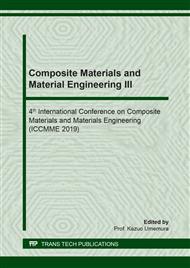p.377
p.385
p.391
p.397
p.404
p.410
p.416
p.424
p.430
Effect of Cement-Asphalt Emulsion Mortar Based on a Laboratory Investigation
Abstract:
As known, cement has been used as a stabilizing agent for the road pavement stabilization technique. However, it could cause an adverse effect of premature cracking on road, resulting from the inherent brittle manner of cement-stabilized materials. This research aims to investigate on a cement-asphalt emulsion mixture as a new stabilizing agent which would provide more flexibility of the road-stabilized material. Cement-asphalt emulsion mortar (CAE) (the mixture of Portland cement type I, asphalt emulsion type CSS-1, and standard sand) was used as the study material. The compressive strength and flexural strength of CAE mortar with varying cement and asphalt emulsion ratios at 7 days and 28 days testing with controlled relative humidity curing were performed. The test results showed that the flexural strength and the compressive strength decrease with an increase of asphalt emulsion (at fixed ratio CAE mortar). The strength at 7 days of curing is around 70% of that for 28 days of curing. The ratio 4:1 (cement: asphalt emulsion) exhibited the highest compressive strength and the flexural strength at 28 days. This result of this research is likely promising to obtain a new stabilizing agent which can create the flexibility property of a road-stabilized material.
Info:
Periodical:
Pages:
404-409
Citation:
Online since:
May 2019
Price:
Сopyright:
© 2019 Trans Tech Publications Ltd. All Rights Reserved
Share:
Citation:


